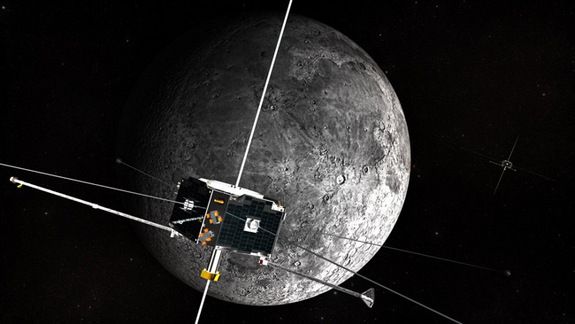Twin Space Weather Probes Now Studying Moon's Interior

Two NASA spacecraft that launched on a mission to study space weather are now orbiting the moon, investigating its interior and surface composition.
The twin Artemis probes began their journey away from Earth's orbit in July 2009. The first spacecraft entered lunar orbit on June 27, with the second arrived on July 17, researchers said.
The probes will now approach the moon's surface to within 60 miles (97 kilometers) once per orbit, providing scientists with new information about the moon's internal structure for the next seven to 10 years. [Latest Moon Photos From NASA Spacecraft]
"From their new orbits about the moon, Artemis will collect important data about the moon's core, its surface composition and whether it contains pockets of magnetism," said Dave Sibeck, Artemis project scientist at NASA's Goddard Space Flight Center in Greenbelt, Md., in a statement. "Artemis also will provide information needed to understand the moon's magnetic environment in space and its relationship to events near Earth."
NASA launched the two spacecraft in 2007 as part of a five-satellite fleet that made up a mission called Themis (Time History of Events and Macroscale Interactions during Substorms).The identical Themis probes orbited Earth, helping scientists determine how storms in our planet's magnetic field lead to Earth's colorful auroras, also known as the northern and southern lights.
When the Themis probes completed their primary mission in 2008, mission scientists team proposed that the two outermost spacecraft could use their leftover fuel to propel themselves into lunar orbits in a new science mission called Artemis (Acceleration, Reconnection, Turbulence and Electrodynamics of the Moon's Interaction with the Sun).
The first Artemis probe moved from Earth orbit to a temporary Lagrange point orbit on the far side of the moon on Aug. 25 of last year. The second moved to a Lagrange point on Oct. 22. Lagrange points are places where the gravity of Earth and the moon balance, creating a sort of gravitational parking lot for spacecraft.
Sign up for the Live Science daily newsletter now
Get the world’s most fascinating discoveries delivered straight to your inbox.
From there, the two spacecraft headed to lunar orbit.
"This is a good example of how additional science can be achieved with the innovative use of existing spacecraft," said Dick Fisher, director of Heliophysics for NASA's Science Mission Directorate in Washington.
Artemis will work in tandem with other current missions — such as NASA's Lunar Reconnaissance Orbiter, Ladee (Lunar Atmosphere and Dust Environment Explorer) and Grail (Gravity Recovery and Interior Laboratory) — to prepare the ground for increased robotic exploration of the moon, researchers have said.
Meanwhile, the other three Themis probes are continuing their original science mission, researchers said. The probes' findings may help protect commercial satellites and humans in space from the adverse effects of particle radiation.
This story was provided by SPACE.com, sister site to LiveScience. Follow SPACE.com for the latest in space science and exploration news on Twitter @Spacedotcom and on Facebook.














